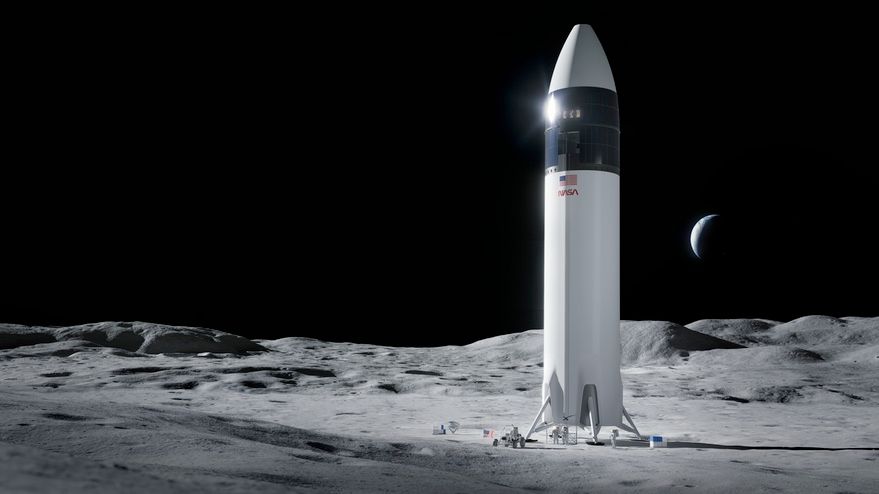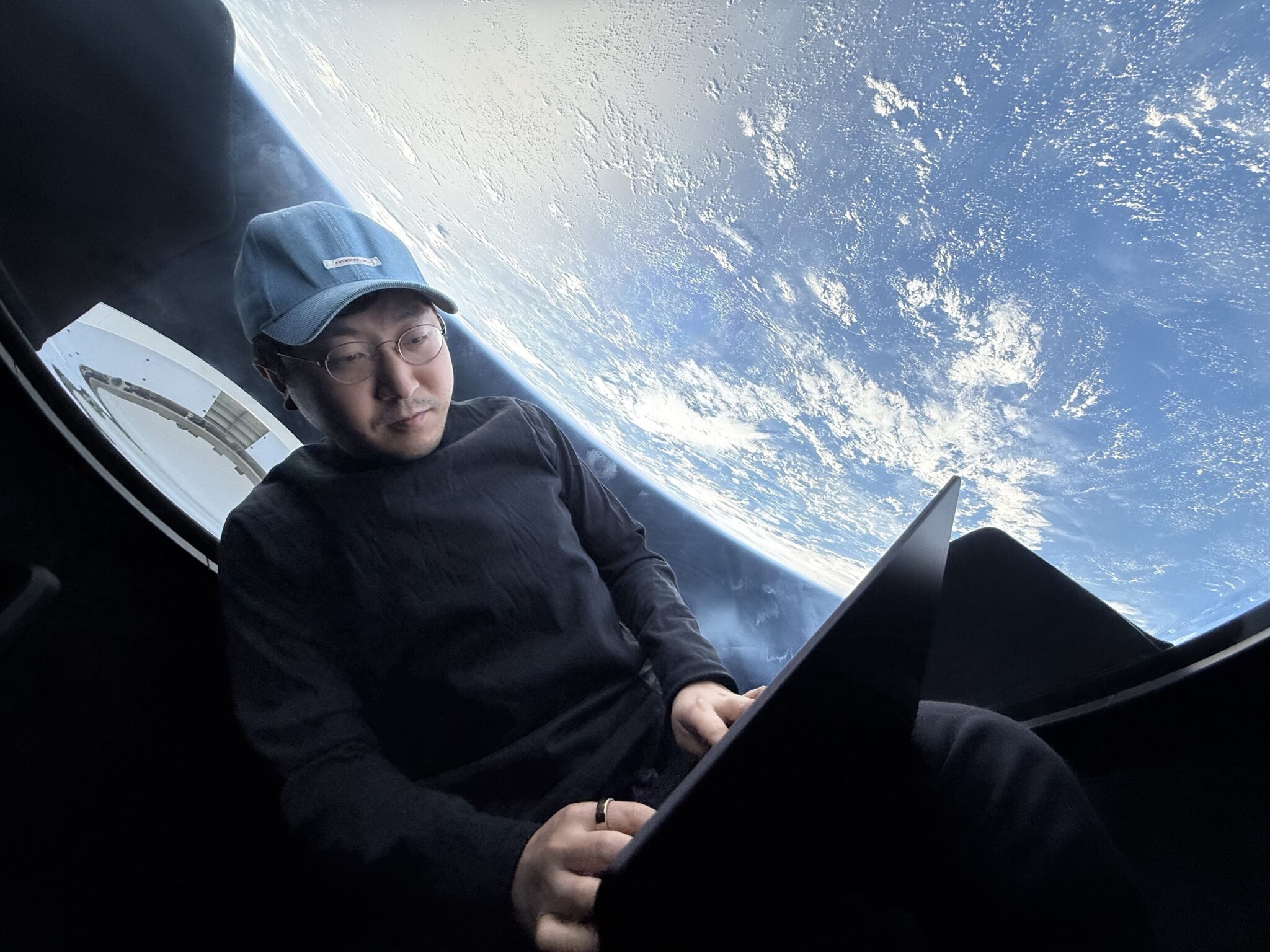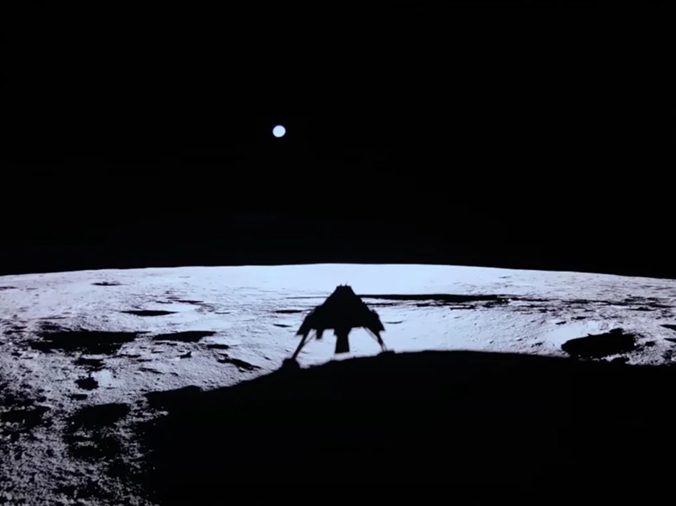After its Space Launch System (SLS) design passed its technical and budget reviews, NASA has now formally committed itself to building this giant rocket. And it may be just in time now that a “Cold War” has apparently been “refrozen” and a new “Space Race” is being restarted. However, while the previous space race was purely a two horse affair, this time there are three main contenders: USA, Russia and China – with a few outsiders following on behind. So which is likely to win this new space race back to the Moon and onto Mars?
As we have done for the past five years, Seradata’s (formerly Flightglobal/Ascend’s) space analysts have examined the relative chances for each space faring nation of being next to return astronauts to the Moon. This year we will also assess which is likely to be first to put astronauts onto the planet Mars.
The odds are given as a notional bookmaker rating of competitors in a horse race – the lower odds indicating the better the chance and we note any changes from last year. Note that we cannot offer these odds for real wagers as Seradata is not licenced for gambling activities.
By the way, for those hoping for a more international approach to space exploration, recent geopolitical events mean that major manned space projects like the International Space Station are now much less likely now to be conducted with Russia or China being involved.
As we have noted previously, to be a true competitor in long range manned space exploration, a nation needs five key elements to be succcessful:
1. A heavy-lift launch vehicle carrying 70 tonnes or more to low Earth orbit (LEO).
2. A manned capsule/service module and transfer stages for passage and return from lunar (or Martian) orbit.
3. A lunar landing/ascent craft to carry one or more astronauts to and from the lunar surface (and Martian surface).
4. Rendezvous, guidance and docking technology.
5. The political will and financial resources to develop the systems to accomplish such a project.
This list of “essential items” is what we will judge each nation against.
USA is no longer favourite for lunar return (out to 7-2 from 6-4) but is Evens favourite for a Mars landing
The United States of America has many of the attributes that should make it favourite. It has experience in actually landing men on the Moon including all of rendezvous, guidance and landing technology. While it has no current landing/ascent craft, it has the know-how to quickly make one. It should soon have a “super-heavy lift launch vehicle” as its SLS design’s development serenely marches on defying its carping critics. Although its Orion and ESA built service module maybe slightly late, it is only delayed by a few months. And yet despite all this, all is not well.
While even the smallest Block 1 version would be useful, the larger Block 1A and Block 2 versions of the SLS rocket would be ideal launch vehicles to conduct simple Apollo-class manned lunar exploration missions. However, the White House, along with NASA’s leadership, lacks the political will to return to the Moon. Instead they seem intent on trying to capture a small asteroid into the Earth Moon system to study that instead. Officially this is part of the master plan to get to Mars but there are major doubts about whether such a project should be done in the first place.
A lack of political will has affected NASA in other ways. Despite its prestigious reputation, NASA remains cash strapped as the result of US government spending cutbacks. It can only build one part of its long range exploration project equipment at a time. Thus while SLS is being built, NASA cannot afford to build a lunar lander. While some privateer firms such as Golden Spike are examining simple manned lunar landing craft, really this is not satisfactory unless they have NASA backing. USA could catch up in a relatively short time – but it needs the political will (and cash) to do so.
While asteroids are preferred to the Moon, funding for a full blown manned Mars landing mission remains a distant prospect. As it is, it does not really have the kit to even start. For example, while later versions of the SLS represents a step change in payload launch capability with 165 metric tons being able to be carried to low Earth orbit, nevertheless the Seradata analysis is that it is essentially too small for Mars missions using conventional chemical propulsion architectures. This is even more apparent when one considers that the projected SLS flight rate is only one or two flights per year.
Even if this flight rate could be increased, conventional Mars mission architectures envisage a large craft to be built in low Earth orbit which would require several flights as the elements of the mission are put together in low Earth orbit. Even with advanced in orbit fuel storage techniques, such an in-orbit construction programme would require at minimum about one SLS launch a month for about eight months to launch the living quarters, landing craft, transfer/return stages, fuel and consumables (the heaviest items) and finally the crew. Ideally, for maximum mission reliability and efficiency there really should be only a few months between the first launch and the last one. Thus even eight months would probably be too long a time period. If SLS had a larger payload – to say above 200 metric tons – and if the return stage was sent to Mars first, perhaps the number of SLS flights (and months) needed could be reduced.
Despite this handicap, in the race to Mars there is a hope for America. And his name is Elon Musk. Musk and his SpaceX team have officially dismissed the Moon as a desired destination. For them Mars remains the main target. Musk had previously suggested that his firm is designing a Mars Colonial Transport (MCT) would be used as both a transfer and landing craft.
To launch this massive craft, a new monster reusable super-heavy-lift launch vehicle powered by several new 1.8 million lb thrust LOx/Methane burning Raptor rocket engines is being designed. With this Musk and his team hope to inject a fully constructed “Mars Colonial Transport” (MCT) directly into a Mars transfer orbit. In doing this he will avoid any expensive or time consuming in-orbit construction.
While Space X has kept its cards close to its chest, but have noted that they need to launch a 100 metric ton payload (presumably the size of the MCT) into a transfer orbit to Mars. Engineering experts and space analysts have attempted to size the rocket expected to launch the MCT. They expect the SpaceX super heavy to look like Falcon 9 Heavy. That is, it should have a cross-fed twin booster and main stage configuration with a powerful upper stage and have a payload to LEO capability of well above 300 metric tons – almost twice that of an SLS!
Of course, we will have wait and see if Musk achieves this but so far he has more or less delivered on his promises.
In a way, this could be a good fit for NASA. that is, should it have a mind to do so, NASA could concentrate on lunar exploration in the near term using SLS, while leaving Musk and his SpaceX outfit to work on the Mars mission with the correctly sized launch vehicle and transport craft – perhaps using some NASA funding.
Of course, Musk’s vision is for a grandiose reusable transport and landing system to make many flights to Mars. In the meantime another nation (Russia? China?) might try for a much smaller mission to beat him to the glory of being the first. Nevertheless, for the time being, SpaceX remains ahead in its Mars plans, keeping USA favourite to put humans onto another planet.
There are, of course, other privateer Mars projects. The “one way trip” Mars One funding system remains to be proven and their technology is just a paper project for the time being. Dennis Tito’s Inspiration Mars project is more practical but is only a flyby mission. Nonetheless, if it ever gets the funding it could lead to bigger things.
China is the new favourite for first lunar return at 6-4 (in from 5-2), but stays out of the Mars race for now at 10-1
One party states such as China do have some well publicised downsides which can seriously hinder a nation’s technological, economic and social advancement. Nevertheless, China’s style of government can also have certain advantages over its democratic counterparts, especially when mounting major technological or economic projects in the longer term.
By not having to pander to public opinion, or have interruptions caused by the electoral process, or suffer reversals of political will caused by changes of government, the leaderships of such nations can theoretically plan out a smoother technological progress in order to improve things for the longer term.
Of course, all this assumes that poor judgement, bureaucracy and corruption, malevolent factors which can also affect democratic governments, do not get in the way. And China has had its share of past government-led disasters which have seriously set back the nation’s progress. Nevertheless, it seems that China has learned from its past mistakes, and, as a result, for more than three decades has experienced a smooth uninterrupted stream of technological and economic development.
China’s space programme is an example of this, as it displays a steady and relentless progress, moving beyond launching just satellites, to launching manned spacecraft and simple space stations, and most recently, to mounting unmanned landing missions to the Moon.
China itself refuses to indulge itself in a “space race” as such, and yet gets a quiet satisfaction in becoming the number three space nation after Russia, and receiving plaudits for doing so. China’s manned space programme now has two goals: to launch and man a major space station in low Earth orbit, and to land its astronauts on the Moon – probably in 2025. And in doing so China could soon rival USA for the number one position.
China has already decided to build a heavy lift launch vehicle (Long March 9) using a liquid oxygen (Lox)/kerosene powered core stage and boosters with a Lox/liquid hydrogen powered upper stage. With such a rocket, LEO payloads in the 100-130 metric tones range have been mentioned, with a trans lunar injection payload capability of 48-50 metric tons. Such a vehicle is roughly equivalent to the Saturn V of the Apollo era and will allow similarly basic manned exploration. This will be enough for China for the time being as it stays out of the Mars race.
China is taking a stepping stone approach to landing its “Taikonauts” onto the lunar surface. Having mastered its rendezvous techniques in low Earth orbit, earlier this year China demonstrated that it could also land objects onto the moon. For while its small lunar rover failed in a relatively sort time, its oversized Chang’e 3 landing craft was a hint of what China plans next. China is planning a full lunar sample return mission – a template for a crewed landing mission. As a prelude to that, in late 2014 China plans a lunar orbit and return mission to test out its capsule’s re-entry corridor guidance and thermal protection systems during its return to Earth at super-orbital velocities. It is also reported that the spacecraft will also carry live animals aboard.
Taking all this into consideration, China has become favourite at 6-4 (from 5-2) to return humans to the Moon, though it remains a 10-1 outsider for Mars.
Russia’s decision to build a new super heavy rocket cuts its Moon odds to 3-1 (in from 4-1) but it really eyes Mars at 5-2
Russia still smarts over being beaten by USA to first land men on the Moon in July 1969. The reason was that its N-1 Moon rocket was too unreliable to fly successfully. Russia has lacked a heavy lift launch capability since the Energia rocket was eventually cancelled. Having watched its US and Chinese competitors start building new heavy lift launch vehicles, Russia has now committed to building its own “SLS” equivalent though its final design has yet to be set. This move has cut its lunar exploration odds from 4-1 to 3-1.
Russia is, at least, close to getting a spacecraft equivalent to Orion with which it will be able to mount lunar missions. Drawings show its evident similarity to the US design, nevertheless, it has been independently developed. Sometimes engineering designs look alike because they have the similar technical solutions to the same problems and restrictions.
Roscosmos has given USA and China a head start in their heavy lift launch vehicle development. Nevertheless, Russia has the advantage of having some of the best and most powerful rocket engines in the business and should be able to catch up rapidly. As for lunar lander technology, Russia probably has the know how (they did develop a small one man never-used manned lander in the 1960s plus some actually soft-landed unmanned vehicles) but it has yet to build a new one.
Russia is loath to be beaten in the Space Race again and will not stand for being reduced to being number three in space behind China. While the Moon seems the likeliest destination for Russian manned exploration, at least in the near term, expect mother Russia to be working on a Mars mission on the quiet as well.
Russia may “think out of the box” and use a different kind of Mars transfer technique possibly using electric propulsion requiring a lot less fuel and even consumables if the journey time can be cut. It might do this as it observes what the Isle of Man is up to. All it really needs is a lander/ascent vehicle and it could have enough to spoil Elon Musk’s party. Russia is second favourite to get mankind to Mars first at 5-2.
The Isle of Man’s odds stick at 33-1 as the amusingly bizarre fourth favourite to put humans on either the Moon or Mars
Yes – that bizarrely small contender, the Isle of Man, is apparently bent on emulating the fictional Duchy of Grand Fenwick which unintentionally won the space race in in Richard Lester’s film comedy “The Mouse in the Moon” (1964). The Isle of Man remains in the running but has again had a very quiet year. After making a grand announcement in 2012 that they were going to offer tourism flights to the Moon, its domiciled firm Excalibur Almaz has been off the radar.
It is nevertheless still considering using an electrical-thruster propelled transfer vehicle which will still need to be initially launched in orbit by a third party. The firm will need a lander to be designed if landings are to be attempted either on the Moon or on Mars and as such its odds for both remain at a lengthy 33-1. The amusing part of all this is that, as proven by some unmanned long range space missions, their low continuous thrust transfer vehicle concept is probably the best way of reaching Mars, and other nations (especially Russia), may yet take a lead from them.
India recovers to 50-1 (from 100-1) for Moon as it recommits to manned space but is almost a non-runner for Mars
While India has hopes of achieving manned spaceflight – they have no current plans for lunar landing missions. Despite this, India has recommitted itself to a blunt body manned capsule and thus breaks away from the rest of the pack for having, at least, a theoretical lunar mission potential. India has also sent the Mangalyaan Mars Orbiter Mission probe on its way to the planet. Nevertheless, while India’s odds have come in from 100-1 for the Moon, it remains a rank outsider at 50-1. Likewise it is not really a runner for a manned mission to Mars – at least not in this century (odds 500-1).
ESA, Japan and others are at 500-1 bar for all destinations but UK remains a dark horse outsider at 300-1
Despite some failed attempts at building a manned spacecraft with Russia, and now its cooperation with NASA in building the Orion capsule’s service module from its ATV technology, European Space Agency (ESA) has really been out of the manned space business since the cancellation of Hermes mini-shuttle in the 1980s so is set at 500-1 for both destinations. Nevertheless one of its members, the United Kingdom, remains a dark horse.
While its astronauts may take yet part in a NASA landing via its ESA links, the UK might yet one day get its own lunar and interplanetary capability. It all depends on what happens to the UK-based firm, Reaction Engines Limited, and its reusable air-breathing rocket and space plane research. If this can be made to work and reduce the cost of access into space then there is no end to the possibilities that the UK can achieve. Reaction Engines has studied cis-lunar transportation architectures using its Skylon space plane design as the Earth-to-LEO leg, and has even modelled how a Mars landing mission might be run under its Project Troy study. Given that firms from both Europe and USA are eyeing its technology the UK’s odds stay at 300-1 for both the Moon and Mars but may reduce in future.
While there is pro-manned spaceflight support in Japan, for the time being JAXA is concentrating on its successor to the H-2 launch vehicle family and has no cash for manned exploration so drops to 500-1 for both the Moon and Mars. JAXA is more likely to try and join NASA’s manned exploration programme like ESA. While it is mounting suborbital animal launches in attempts to attempt life support systems for manned space missions, Iran remains a no hoper for both the Moon and Mars at 1000-1 as is South Korea.
In Summary: China leads return to Moon race but Elon Musk should take Mars prize for USA
The fact that USA has turned its back on the Moon for the time being, means that China is likely to be first to return, closely followed by Russia. USA still has time to get back to the Moon first – but it has to decide now. China is making steady progress, and once its heavy lift launch vehicle is ready (still about five years away), it should be able to make a manned landing attempt relatively soon afterwards. While Russia is fearful of being beaten both by USA and China onto the surface of the Moon, it really has Mars as its target. However, it may not beat Elon Musk, who continues to impress and amaze. It is only him and his SpaceX outfit that is making USA favourite to take the first man on Mars prize.
Lunar Human Return Race:
- China (6-4)
- Russia (3-1)
- USA (7-2)
- Isle of Man (33-1)
- India (50-1)
- UK (300-1)
- ESA and Japan (500-1 each)
- Iran and South Korea (1000-1 each)
Mars First Human Landing Race:
- USA (Evens)
- Russia (5-2)
- China (10-1)
- Isle of Man (33-1)
- UK (300-1)
- ESA, India and Japan (500-1 each)
- Iran and South Korea (1000-1 each)
The writer of this article has a small financial interest in Reaction Engines Limited





